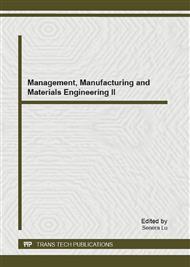p.144
p.149
p.158
p.163
p.168
p.173
p.177
p.181
p.186
Seismic Vulnerability Assessment of Multistory Timber Braced Frame Traditional Masonry Structures
Abstract:
Research carried out on the seismic investigation of timber braced frame (TBF) masonry structures of traditional construction practice is presented, essential for seismic performance evaluation of such construction type using engineering approaches. An innovative simplified equivalent frame method (EFM) based on macro modelling approach is presented for nonlinear dynamic seismic analysis of TBF masonry structures. The modelling include EFM idealization of wall using stiff elastic beam-column element assigned with moment-rotation (M-θ) nonlinear lumped plasticity hinges. Earlier, the approach i.e. the EFM idealization and M-θ constitutive law, is calibrated with the experimental results obtained through quasi-static cyclic test on full scale walls. The technique is further extended herein for seismic dynamic analysis of multistory structures. Generalization of the technique for modelling walls of various geometry and loading is performed. It included nonlinear static pushover analysis of various case study walls, by means of SAP2000 calibrated earlier with experimental results, for the derivation of lateral force-deformability behavior towards the development of generalized M-θ constitutive law for TBF masonry walls. Three representative structures, from one to three storeys, are analyzed using a suite of ten natural accelerograms and incremental dynamic analysis technique. Structure fragility and resilience functions are derived using a fully probabilistic and dynamic approach. The structures analyzed in the present study represent TBF masonry wall structures, called as Dhajji-Dewari structures, common in Northern areas of Pakistan.
Info:
Periodical:
Pages:
168-172
Citation:
Online since:
December 2012
Authors:
Price:
Сopyright:
© 2013 Trans Tech Publications Ltd. All Rights Reserved
Share:
Citation:


